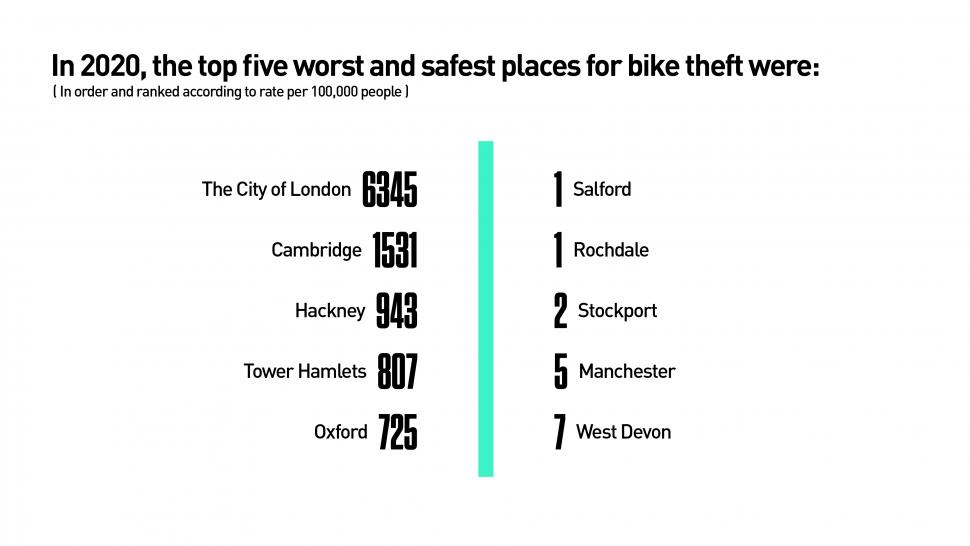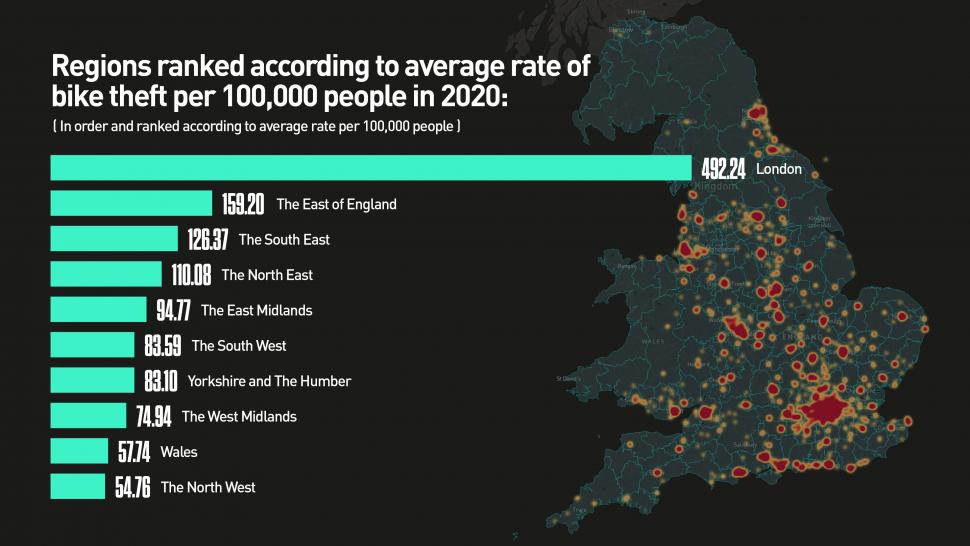- News
- Reviews
- Bikes
- Components
- Bar tape & grips
- Bottom brackets
- Brake & gear cables
- Brake & STI levers
- Brake pads & spares
- Brakes
- Cassettes & freewheels
- Chains
- Chainsets & chainrings
- Derailleurs - front
- Derailleurs - rear
- Forks
- Gear levers & shifters
- Groupsets
- Handlebars & extensions
- Headsets
- Hubs
- Inner tubes
- Pedals
- Quick releases & skewers
- Saddles
- Seatposts
- Stems
- Wheels
- Tyres
- Tubeless valves
- Accessories
- Accessories - misc
- Computer mounts
- Bags
- Bar ends
- Bike bags & cases
- Bottle cages
- Bottles
- Cameras
- Car racks
- Child seats
- Computers
- Glasses
- GPS units
- Helmets
- Lights - front
- Lights - rear
- Lights - sets
- Locks
- Mirrors
- Mudguards
- Racks
- Pumps & CO2 inflators
- Puncture kits
- Reflectives
- Smart watches
- Stands and racks
- Trailers
- Clothing
- Health, fitness and nutrition
- Tools and workshop
- Miscellaneous
- Buyers Guides
- Features
- Forum
- Recommends
- Podcast
news
 Cyclist locking bike in Hackney (picture credit Bikmo).JPG
Cyclist locking bike in Hackney (picture credit Bikmo).JPGHow active are bike thieves in your area? New online bike theft tracker helps you find out
A new interactive heatmap developed by specialist cycle insurer Bikmo and based on crime data from police forces across England and Wales shows that the London Borough of Hackney saw the highest number of reported bike thefts last year – 2,324 in all, a 46 per cent increase from 2019, accounting for 3 per cent of all cases of bicycles reported stolen across the two countries.
The borough bucked the national trend, however, with the 74,573 total reported bike thefts in 2020 down 11 per cent on the previous year – despite unusually widespread coverage in the mainstream press of cycle thefts in the early part of the year perhaps giving the opposite impression, explained by the newsworthiness of bikes being stolen from NHS staff during the first national lockdown.
> Cycle thefts down by 25% during COVID-19 lockdown
Bikmo says that by overlaying crime statistics with population data, which enables areas to be given a rate of reported cycle thefts per 100,000 residents can help people “make more informed choices about where to safely lock their bikes,” with the aim of reducing overall bike theft, which it says “is of increasing concern to new and returning riders during the pandemic.”
On that measure, the City of London came out top by far, with a rate of 6,345 thefts per 100,000 residents, although given its specific characteristics – a resident population of less than 10,000, but a working population (in non-pandemic times) upwards of half a million people, it is something of an outlier.
Next came the country’s leading city in terms of the percentage of people cycling regularly, Cambridge, with a rate of 1,531 – a fivefold decrease on 2019, possibly explained by the absence of students during lockdown, as well as fewer people commuting from the city’s railway station, a well-known bike theft hotspot.
Also in the top five were Tower Hamlets, with a rate of 807, and Oxford, the city with the second highest levels of cycling in England and Wales, with 725 reported thefts per 100,000 residents.
The four areas with the lowest levels of bike theft per 100,000 population – Salford and Rochdale on one apiece, Stockport on two, and the City of Manchester, on four – all fell within Greater Manchester.
However, Bikmo provided the caveat that with Greater Manchester Police found to have failed to report more than 80,000 crimes in 2020, it is likely that many stolen bikes will not have been recorded.
The next lowest figure was from West Devon, with seven thefts per 100,000 population, followed by another local authority within the same county, Torridge, on nine, and then the Welsh county of Ceredigion, on 11.
Commenting on the launch of the interactive bike theft tracker, Bikmo CEO David George said: “As more and more people begin to realise the many benefits of cycling during the Pandemic, it is only natural that fears around bike theft will rise.
“We are proud to today unveil a brand new public tool, allowing riders across the country to view annual bike theft rates in their local area and identity hotspots where crimes are being reported.
“The new tool will be regularly updated to provide an ongoing resource to members of the public. We hope this will be useful to the fast growing number of riders, and help increase awareness in high-risk areas.”
You can find out more information on Bikmo’s bike theft tracker, as well as its insurance products tailored towards cyclists, here.
Latest Comments
- Rendel Harris 3 min 50 sec ago
I'd say as a rough estimate of drivers who deliberately behave badly towards me when I'm cycling it would be split 90/10 male/female, of those who...
- Rendel Harris 7 min 50 sec ago
Same here re-SUVs, in fact possibly even more women than men driving them, there seems to be a pattern in very rich areas of households owning one...
- Tom_77 1 hour 24 sec ago
The SaddlePod looks nice, but if you're in the UK by the time you've paid shipping ($31) and import duty (who knows where we'll be with that come...
- TheBillder 1 hour 3 min ago
I've had (past tense is deliberate) 3 of these over the past 5 years. I'm back here researching for a replacement as my last one broke last week. I...
- chrisonabike 3 hours 5 min ago
And the next time - plead sympathy for your addiction, caused by trauma from your previous "accident"...
- wtjs 3 hours 8 min ago
Butyric Acid... was the most disgusting thing I have ever smelt in the lab...
- ubercurmudgeon 3 hours 39 min ago
Even a stopped clock, etc, etc...
- Bigtwin 5 hours 46 sec ago
I wouldn't be meeting that Orange Pillock anywhere, let alone 1/2 way.



Add new comment
3 comments
The tool can be found here:
http://bike-theft-map.bikmo.com/
Those results show up a pretty obvious problem here - population isn't really a meaningful divisor. If you want to make a useful comparison, it would need to take into account something like bike ownership, or number of bike journeys.
I'm also slightly confused about why the map based on data from England and Wales also includes (part of) Scotland and/or Northern Ireland. Even if there is a technical explanation for this (e.g. the victim was on holiday when their bike got nicked and reported it back home to their local police force) it seems sloppy to include them on the final map when they are clearly incomparable.